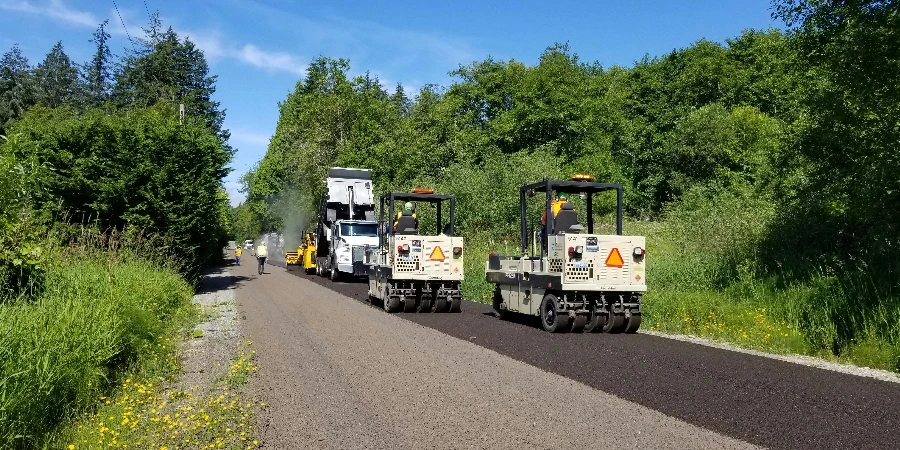En 2025, le marché des compacteurs à asphalte devrait atteindre 3.5 milliards USD, porté par l'urbanisation et les avancées technologiques. Cet article fournit une analyse approfondie des critères essentiels de sélection des compacteurs à asphalte, garantissant aux acheteurs professionnels de prendre des décisions éclairées et stratégiques. Des critères de performance aux normes de sécurité, les informations proposées ici aideront à optimiser les stocks et les ventes sur un marché concurrentiel.
Sommaire :
– Aperçu du marché des rouleaux compresseurs pour asphalte
– Analyse détaillée du marché
– Facteurs clés lors de la sélection d’un rouleau compresseur
– Évaluation des coûts et considérations budgétaires
– Évaluation de la durabilité et de la durée de vie
– Un bref aperçu des applications du rouleau compresseur pour asphalte
- En résumé
Aperçu du marché des rouleaux compresseurs pour asphalte
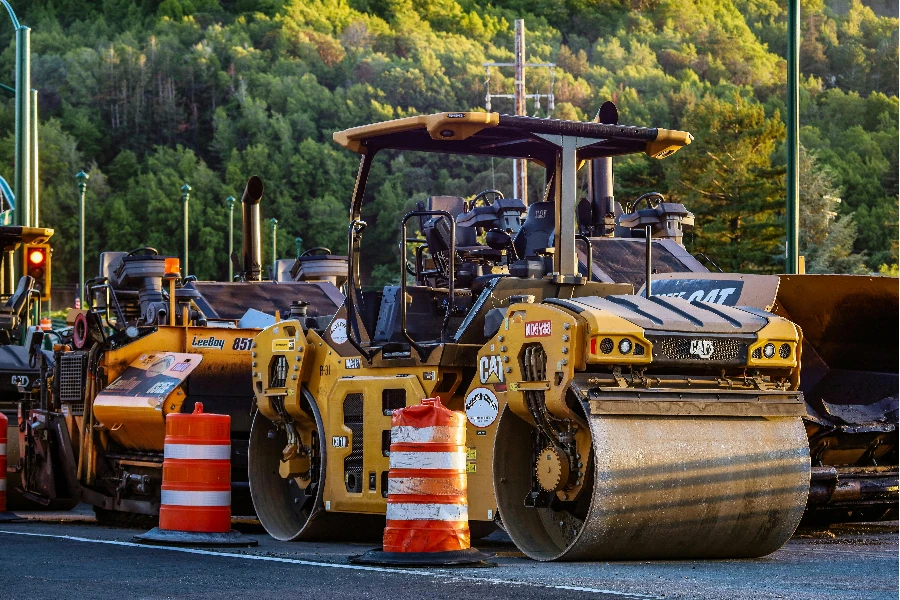
Le marché mondial des compacteurs à asphalte devrait connaître une croissance substantielle, tirée par le développement croissant des infrastructures et l'urbanisation. D'ici 2025, la taille du marché des compacteurs à asphalte devrait atteindre 3.5 milliards USD, avec un taux de croissance annuel composé (TCAC) de 5.8 % entre 2024 et 2030. Les principales régions contribuant à cette croissance sont l'Amérique du Nord, l'Europe et l'Asie-Pacifique, où des investissements importants dans la construction et l'entretien des routes sont en cours.
En Amérique du Nord, les États-Unis et le Canada sont en tête du marché avec de grands projets d’infrastructures visant à améliorer les réseaux routiers et les systèmes de transport. L’Europe suit de près, l’Allemagne et la France investissant massivement dans les technologies de construction routière durable. La région Asie-Pacifique, en particulier la Chine et l’Inde, connaît une urbanisation rapide, ce qui entraîne une demande accrue de machines de construction routière de pointe.
En outre, les avancées technologiques telles que l’intégration de l’automatisation et des technologies respectueuses de l’environnement dans les compacteurs d’asphalte devraient encore stimuler la croissance du marché. L’adoption de l’IoT et de l’IA pour la surveillance en temps réel et la maintenance prédictive révolutionne le secteur, offrant une efficacité accrue et des coûts d’exploitation réduits.
Analyse détaillée du marché

Principaux indicateurs de performance
Les compacteurs à asphalte sont évalués en fonction de plusieurs critères de performance, notamment l'efficacité de compactage, la consommation de carburant, les coûts d'exploitation et la durabilité. Les compacteurs à asphalte modernes sont conçus pour offrir une efficacité de compactage élevée avec un nombre minimal de passages, réduisant ainsi la consommation de carburant et les émissions. Par exemple, les modèles équipés de systèmes de compactage intelligents peuvent atteindre une efficacité jusqu'à 15 % supérieure à celle des compacteurs traditionnels.
Dynamique des parts de marché
Le marché est relativement fragmenté, avec des acteurs clés tels que Caterpillar Inc., Volvo Construction Equipment et Dynapac en tête du secteur. Ces entreprises détiennent des parts de marché importantes en raison de leur vaste portefeuille de produits et de leurs solides réseaux de distribution. Les acteurs plus petits se concentrent sur des marchés de niche, fournissant des solutions spécialisées pour répondre aux besoins spécifiques des clients.
Influences économiques
Les facteurs économiques tels que les dépenses publiques consacrées aux projets d'infrastructures et les fluctuations des prix des matières premières ont un impact significatif sur le marché des compacteurs d'asphalte. L'augmentation des investissements publics dans les projets de construction et d'entretien des routes stimule la demande de compacteurs d'asphalte avancés. Cependant, la volatilité des prix de l'acier et d'autres matières premières constitue un défi, affectant les coûts de production et les stratégies de tarification.
Changements de comportement des consommateurs
Les consommateurs privilégient de plus en plus les compacteurs à asphalte respectueux de l'environnement et économes en carburant, en raison des réglementations environnementales strictes et de la nécessité de pratiques de construction durables. De plus, la demande de compacteurs automatisés et intelligents est en hausse, car ils offrent une efficacité améliorée et des coûts de main-d'œuvre réduits.
Préférences des canaux de distribution
La distribution des compacteurs à asphalte se fait principalement par le biais de la vente directe et des réseaux de concessionnaires. Les fabricants exploitent de plus en plus les plateformes numériques pour accroître leur portée et fournir des services après-vente complets. Cette évolution vers la numérisation vise à améliorer l'expérience client et à garantir une maintenance et une assistance rapides.
Innovations récentes
Les innovations récentes sur le marché des compacteurs à asphalte comprennent le développement de compacteurs hybrides et électriques, qui offrent des émissions et des coûts d'exploitation réduits. De plus, l'intégration de la télématique et de la technologie GPS permet un suivi et une surveillance en temps réel, améliorant ainsi l'efficacité et la sécurité opérationnelles.
Étapes du cycle de vie du produit
Les compacteurs à asphalte ont généralement une durée de vie de 10 à 15 ans, en fonction de leur utilisation et de leur entretien. Le marché connaît une demande constante de nouveaux compacteurs à mesure que les anciens modèles atteignent la fin de leur cycle de vie et doivent être remplacés. De plus, le marché des pièces de rechange et des services de maintenance joue un rôle crucial dans la prolongation de la durée de vie opérationnelle des compacteurs à asphalte.
Digitalisation et tendances sociales
La numérisation des engins de chantier, notamment des compacteurs à asphalte, est une tendance majeure, les fabricants intégrant des technologies avancées telles que l'IoT, l'IA et l'apprentissage automatique. Ces technologies permettent une maintenance prédictive, une surveillance des performances en temps réel et des diagnostics à distance, réduisant ainsi les temps d'arrêt et les coûts d'exploitation.
Points douloureux du client
Les principaux problèmes rencontrés par les clients sont les coûts d’investissement initiaux élevés, les difficultés de maintenance et le respect des réglementations environnementales. Les fabricants s’attaquent à ces problèmes en proposant des options de financement, des contrats de maintenance complets et en développant des modèles respectueux de l’environnement pour répondre aux normes réglementaires.
Stratégies de positionnement de marque
Les principales marques du marché des rouleaux compresseurs pour asphalte se concentrent sur l'innovation, la qualité et le service client pour renforcer leur position sur le marché. Des partenariats stratégiques avec des entreprises de construction et des agences gouvernementales sont également mis à profit pour sécuriser des projets à grande échelle et renforcer la présence sur le marché.
Stratégies de différenciation
Les fabricants différencient leurs produits grâce à des fonctionnalités avancées telles que des systèmes de compactage intelligents, des moteurs à faible consommation de carburant et des commandes automatisées. De plus, proposer des solutions personnalisées adaptées aux exigences spécifiques du projet permet d'obtenir un avantage concurrentiel.
Marchés de niche
Les marchés de niche de l'industrie des compacteurs d'asphalte comprennent le développement de compacteurs compacts pour les projets urbains et résidentiels, ainsi que de compacteurs spécialisés pour les pistes d'aéroport et les pistes de course. Ces marchés nécessitent des caractéristiques et des capacités spécifiques, offrant aux fabricants la possibilité de répondre aux besoins uniques des clients.
Facteurs clés lors de la sélection d'un rouleau compresseur
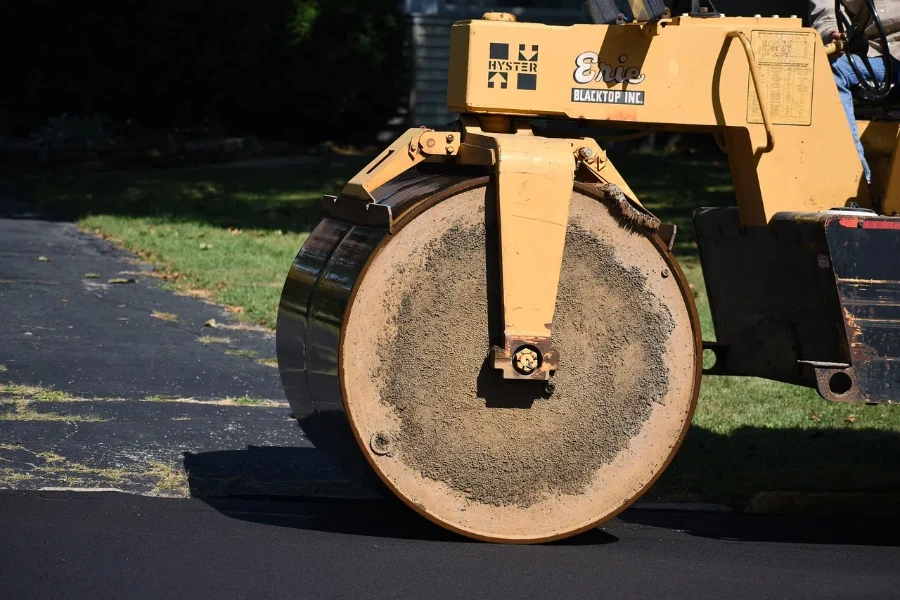
Le choix du bon compacteur d'asphalte est essentiel pour garantir une qualité et une longévité optimales du revêtement. Le processus de sélection implique l'évaluation de divers facteurs, des spécifications de la machine à l'efficacité opérationnelle et aux normes de sécurité. Ci-dessous, nous examinons les considérations essentielles.
Types de rouleaux compresseurs pour asphalte
Différents types de rouleaux d'asphalte sont conçus pour répondre aux différentes exigences du projet. Les principaux types comprennent les rouleaux tandem, les rouleaux pneumatiques et les rouleaux combinés.
Rouleaux tandem Les rouleaux compacteurs à rouleaux sont équipés de deux tambours en acier, un à l'avant et un à l'arrière. Ces rouleaux assurent une finition lisse et sont idéaux pour le compactage des couches d'asphalte. Ils sont très efficaces dans les applications nécessitant des forces de compactage élevées et sont souvent utilisés dans la construction d'autoroutes.
Rouleaux pneumatiques utilisez des pneus en caoutchouc au lieu de tambours en acier. Les pneus peuvent être réglés pour varier la pression, ce qui permet d'obtenir un effet de pétrissage qui aide à obtenir un meilleur compactage. Ces rouleaux sont particulièrement utiles pour compacter les couches de base et sont efficaces pour sceller la surface afin d'empêcher l'infiltration d'eau.
Rouleaux combinés Les compacteurs tandem intègrent les caractéristiques des compacteurs tandem et pneumatiques. Ils sont généralement équipés d'un tambour en acier à l'avant et de pneus en caoutchouc à l'arrière. Cette combinaison permet une grande polyvalence dans la manipulation de différents types de matériaux et permet d'obtenir à la fois des finitions lisses et un compactage en profondeur.
Performances et fonctionnalités
Les performances d'un compacteur à asphalte sont un facteur critique qui a un impact sur la qualité de la chaussée. Les indicateurs de performance clés comprennent la force de compactage, la fréquence et l'amplitude.
Force de compactage est essentielle pour obtenir la densité de chaussée souhaitée. Les rouleaux avec des forces de compactage plus élevées peuvent compacter efficacement des couches d'asphalte plus épaisses. La force est généralement mesurée en termes de charge linéaire statique et de force dynamique.
Fréquence désigne le nombre de vibrations par minute (vpm) produites par le rouleau. Les fréquences plus élevées conviennent aux couches d'asphalte plus fines, tandis que les fréquences plus basses conviennent mieux aux couches plus épaisses. Les réglages de fréquence réglables permettent aux opérateurs d'adapter les performances du rouleau aux besoins spécifiques du projet.
Amplitude est la mesure du mouvement vertical du tambour. Il détermine la profondeur de compactage. Les rouleaux avec des réglages d'amplitude réglables peuvent gérer différentes épaisseurs d'asphalte, offrant une flexibilité pour différentes exigences de projet.
Qualité de construction et matériaux
La qualité de fabrication et les matériaux utilisés dans la construction des rouleaux d'asphalte affectent considérablement leur durabilité et leur durée de vie opérationnelle.
Construction de tambour est un aspect critique. Les tambours en acier de haute qualité avec usinage de précision garantissent un fonctionnement fluide et un compactage efficace. La surface du tambour doit résister à l'usure et à la corrosion pour maintenir ses performances au fil du temps.
Cadre et châssis Les matériaux utilisés doivent être robustes et capables de résister aux contraintes d'un fonctionnement continu. En règle générale, de l'acier robuste est utilisé pour le cadre afin de garantir l'intégrité structurelle.
Systèmes hydrauliques jouent un rôle crucial dans le fonctionnement des compacteurs à asphalte. Des composants hydrauliques de haute qualité garantissent des performances fluides et fiables. Recherchez des compacteurs dotés de circuits hydrauliques bien conçus qui offrent une puissance et un contrôle constants.
Normes de sécurité et certifications
La sécurité est primordiale dans les opérations de construction et les rouleaux compresseurs doivent se conformer à des normes de sécurité strictes.
Sécurité de l'opérateur Des caractéristiques telles que les structures de protection contre le retournement (ROPS) et les structures de protection contre les chutes d'objets (FOPS) sont essentielles. Ces caractéristiques protègent l'opérateur en cas d'accident. De plus, des éléments de conception ergonomiques, tels que des sièges et des commandes réglables, améliorent le confort de l'opérateur et réduisent la fatigue.
Visibilité est un autre facteur de sécurité essentiel. Les rouleaux doivent offrir une visibilité claire de la zone de travail pour éviter les accidents. Des fonctionnalités telles que des rétroviseurs, des caméras et des cabines d'opérateur surélevées peuvent améliorer considérablement la sécurité.
Conformité aux normes Les certifications ISO et CE indiquent que le rouleau répond aux normes internationales de sécurité et de performance. Ces certifications garantissent aux acheteurs la fiabilité et la sécurité de la machine.
Dernières fonctionnalités technologiques
Ces dernières années, les progrès technologiques ont considérablement amélioré les capacités des rouleaux compresseurs à asphalte.
Systèmes télématiques permettent de surveiller en temps réel les performances et les paramètres opérationnels du compacteur. Ces systèmes fournissent des données précieuses sur la consommation de carburant, la progression du compactage et l'état de la machine, permettant une maintenance proactive et un fonctionnement efficace.
Compactage intelligent (IC) La technologie intègre un GPS et des capteurs pour fournir un retour d'information en temps réel sur la qualité du compactage. Cette technologie assure un compactage uniforme, réduit le risque de sur- ou sous-compactage et améliore la qualité globale de la chaussée.
Caractéristiques écologiques Les moteurs à faible consommation de carburant et les technologies à faibles émissions sont de plus en plus importants. Les rouleaux équipés de ces caractéristiques réduisent non seulement l'impact environnemental, mais sont également conformes aux réglementations strictes en matière d'émissions.
Évaluation des coûts et considérations budgétaires
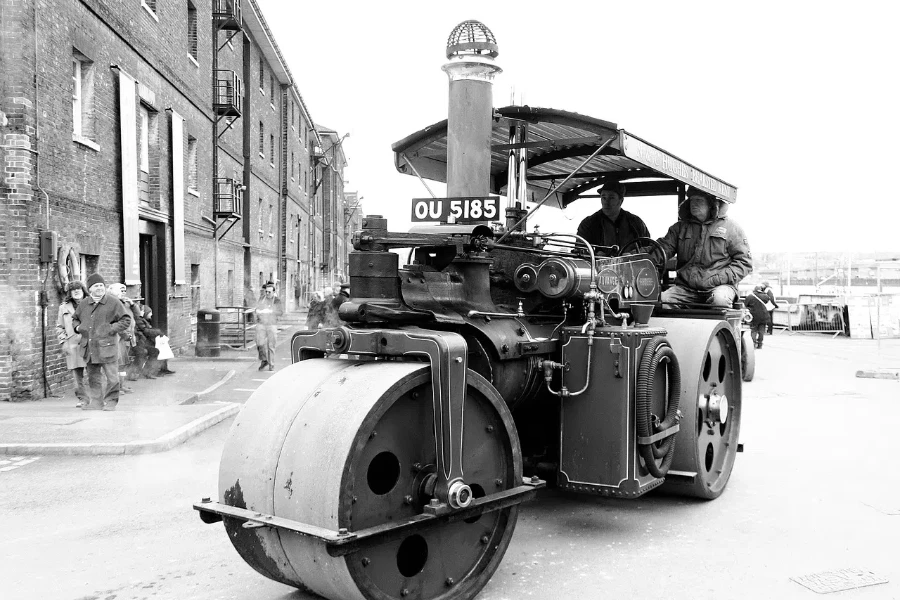
Lors du choix d'un compacteur à asphalte, le coût est toujours un facteur important. Cependant, il est essentiel de prendre en compte le coût total de possession plutôt que le seul prix d'achat initial.
Prix d'achat initial
Le coût initial d'un compacteur à asphalte peut varier considérablement en fonction de son type, de sa taille et de ses caractéristiques. Les compacteurs tandem de base peuvent être plus abordables, tandis que les modèles avancés dotés de systèmes télématiques et de compactage intelligents peuvent être plus chers. Les acheteurs doivent évaluer leurs besoins spécifiques et choisir un modèle qui offre le meilleur rapport qualité-prix pour leur budget.
Coûts opérationnels
Les coûts d'exploitation comprennent la consommation de carburant, l'entretien et les réparations. Les rouleaux équipés de moteurs à faible consommation de carburant peuvent réduire considérablement les coûts de carburant au fil du temps. De plus, les modèles dotés de systèmes hydrauliques avancés et de composants durables peuvent nécessiter moins d'entretien, ce qui réduit encore davantage les dépenses d'exploitation.
Valeur de revente
La valeur de revente d'un compacteur à asphalte est un facteur important à prendre en compte pour la rentabilité à long terme. Les compacteurs de marques réputées, qui ont fait leurs preuves en matière de durabilité et de performances, ont tendance à mieux conserver leur valeur. Un entretien régulier et des soins appropriés peuvent également améliorer la valeur de revente, offrant ainsi un meilleur retour sur investissement lorsqu'il est temps de procéder à une mise à niveau.
Évaluation de la durabilité et de la durée de vie
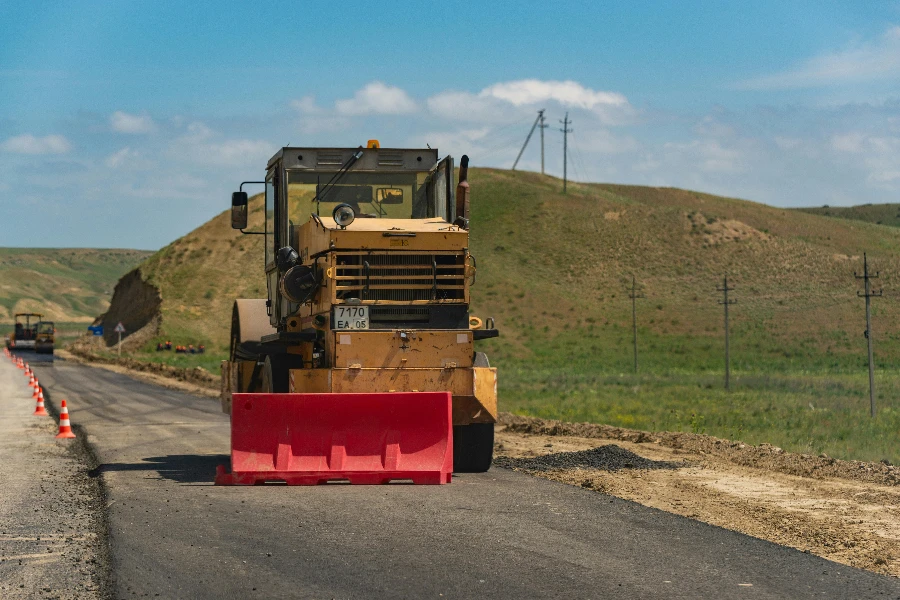
La durabilité et la durée de vie d’un rouleau compresseur d’asphalte sont des facteurs critiques qui influencent sa valeur et sa fiabilité à long terme.
Qualité de fabrication
Des matériaux de haute qualité et une construction robuste sont essentiels pour la durabilité. Les rouleaux dotés de cadres en acier robustes, de tambours résistants à l'usure et de systèmes hydrauliques fiables sont susceptibles d'avoir une durée de vie plus longue. Les fabricants qui utilisent des processus de fabrication avancés et des mesures de contrôle de la qualité produisent des machines capables de résister aux rigueurs d'un fonctionnement continu.
Maintenance et facilité d'entretien
La facilité d'entretien et la facilité d'entretien sont essentielles pour garantir la longévité du rouleau. Les modèles dotés de composants accessibles et de fonctions d'entretien conviviales, telles que des filtres à changement rapide et des points de lubrification centralisés, peuvent simplifier les tâches d'entretien de routine. De plus, la disponibilité des pièces de rechange et l'assistance du fabricant peuvent avoir un impact significatif sur la durée de vie opérationnelle du rouleau.
Garantie et assistance
Une garantie complète et un support technique solide sont des indicateurs de la fiabilité d'un rouleau. Les garanties qui couvrent les principaux composants et offrent une couverture étendue offrent une tranquillité d'esprit. De plus, les fabricants qui offrent un support client solide, y compris une assistance technique et des centres de service, garantissent que tout problème peut être résolu rapidement, minimisant ainsi les temps d'arrêt.
Un bref aperçu des applications du rouleau compresseur pour asphalte
Les compacteurs à asphalte sont des machines polyvalentes utilisées dans diverses applications de construction et d'entretien. Comprendre leurs utilisations spécifiques peut vous aider à sélectionner le modèle adapté à vos besoins.
Construction de routes
Dans la construction de routes, les rouleaux compresseurs jouent un rôle essentiel dans le compactage des couches d'asphalte pour obtenir la densité et la douceur souhaitées. Les rouleaux tandem sont couramment utilisés à cette fin en raison de leur capacité à fournir des forces de compactage élevées et une finition lisse.
Parkings et allées
Pour les parkings et les allées, on peut utiliser des rouleaux tandem et pneumatiques. Les rouleaux pneumatiques sont particulièrement efficaces pour compacter les couches de base et sceller la surface, tandis que les rouleaux tandem assurent une finition lisse et uniforme.
Pistes d'aéroport
La construction et l'entretien des pistes d'aéroport nécessitent un compactage précis pour garantir la sécurité et les performances. Des compacteurs à asphalte dotés d'une technologie de compactage intelligente sont souvent utilisés dans ces applications pour obtenir une densité uniforme et éviter les irrégularités de surface.
Equipements sportifs
Dans les installations sportives, telles que les pistes de course et les courts de tennis, les rouleaux d'asphalte assurent une surface lisse et uniforme. Les rouleaux combinés sont souvent préférés pour ces applications en raison de leur polyvalence dans la manipulation de différents matériaux et de leur capacité à assurer à la fois un compactage en profondeur et une finition lisse.
En résumé
Pour choisir le bon rouleau compresseur, il faut prendre en compte divers facteurs, notamment le type de rouleau, les spécifications de performance, la qualité de fabrication, les normes de sécurité et les caractéristiques technologiques. En évaluant ces aspects en détail, les acheteurs peuvent prendre des décisions éclairées qui garantissent des performances optimales, une rentabilité et une durabilité à long terme.
